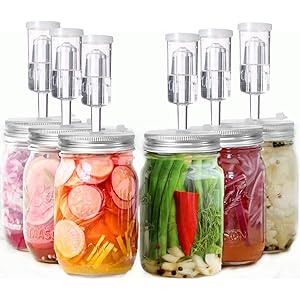Understanding Amber Ale’s Sweetness
Amber Ale is renowned for its distinct sweetness, a characteristic that sets it apart from other beer styles. This sweetness primarily arises from the malt used during brewing. The caramel malts, often employed in Amber Ales, contribute rich, sweet flavors that can evoke notes of toffee, caramel, and even dark fruits. The balance of these flavors is crucial, as they provide a foundation for the beer’s overall profile, making it appealing to a wide range of palates.
The Role of Malt in Amber Ale
Malt is the backbone of any beer, and in Amber Ale, it plays a pivotal role in creating that signature sweetness. The malting process involves soaking grains in water, allowing them to germinate, and then drying them. This process develops enzymes that convert starches into sugars. In Amber Ales, the use of caramel malts, which are roasted at higher temperatures, enhances the sweetness and imparts a beautiful amber hue to the beer. This complexity in malt selection is what gives Amber Ales their unique flavor profile.
Fermentation and Its Impact on Sweetness
Fermentation is another critical factor influencing the sweetness of Amber Ale. Yeast consumes the sugars present in the wort, producing alcohol and carbon dioxide. However, not all sugars are fully fermented, which can leave residual sweetness in the final product. The choice of yeast strain can also affect the sweetness level; some yeasts are more efficient at fermenting sugars than others. This interplay between malt and yeast is essential in crafting the sweet character of Amber Ales.
Bitterness Balance in Amber Ale
While Amber Ales are known for their sweetness, they also typically feature a balanced bitterness from hops. The bitterness from hops helps to counteract the sweetness from the malt, creating a harmonious flavor profile. The International Bitterness Units (IBU) scale is often used to measure this bitterness, and in Amber Ales, the IBU usually ranges from 20 to 40. This balance is crucial, as it prevents the beer from becoming overly sweet and cloying.
Flavor Notes in Amber Ale
The flavor profile of Amber Ale is diverse, with sweetness being just one component. Alongside the caramel and toffee notes, drinkers may also detect hints of chocolate, nuts, and even citrus from the hops. This complexity makes Amber Ales versatile, pairing well with a variety of foods. The interplay of sweet and bitter flavors, along with the aromatic qualities, creates a well-rounded drinking experience that appeals to many beer enthusiasts.
Get more content like this!
Sign up to receive updates and new terms first hand.
Temperature and Sweetness Perception
The temperature at which Amber Ale is served can significantly influence the perception of its sweetness. When served too cold, the flavors may be muted, and the sweetness can be less pronounced. Conversely, as the beer warms, the aromas and flavors become more vibrant, allowing the sweetness to shine through. Therefore, serving Amber Ale at the optimal temperature, typically between 45°F and 55°F, can enhance the overall tasting experience.
Food Pairings with Amber Ale
Amber Ale’s sweetness and balanced bitterness make it an excellent companion for various foods. Dishes such as grilled meats, barbecue, and even spicy cuisine can benefit from the beer’s flavor profile. The sweetness can complement the charred flavors of grilled foods, while the bitterness can cut through the richness of fatty dishes. This versatility in food pairings further highlights why Amber Ale is a favorite among craft beer lovers.
Regional Variations of Amber Ale
Amber Ales can vary significantly based on regional brewing traditions and ingredient availability. For instance, American Amber Ales tend to be hoppier and have a more pronounced bitterness compared to their English counterparts, which may lean more towards malt sweetness. These regional differences contribute to the diverse interpretations of Amber Ale, showcasing how local ingredients and brewing techniques can influence the final product’s sweetness and overall flavor.
Crafting Your Own Amber Ale
For those interested in brewing their own Amber Ale, understanding the balance of ingredients is key. Selecting the right combination of malts, hops, and yeast will determine the sweetness and overall flavor profile of the beer. Homebrewers should experiment with different caramel malts and hop varieties to find the perfect balance that suits their taste preferences. This hands-on approach allows for a deeper appreciation of what makes Amber Ale sweet and enjoyable.
Conclusion: The Sweet Allure of Amber Ale
Amber Ale’s sweetness is a multifaceted characteristic shaped by various brewing elements, including malt selection, fermentation processes, and hop balance. This complexity not only defines the beer’s flavor profile but also enhances its appeal to a broad audience. Whether enjoyed on its own or paired with food, the sweet allure of Amber Ale continues to captivate beer enthusiasts around the world.




